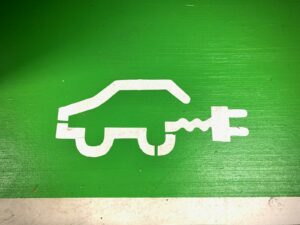A new report by Transport & Environment (T&E) reveals that the biggest cruise ships taking to the sea today are twice as big as they were at the turn of the century.
To put this into perspective, the largest cruise ship currently afloat – the Icon of the Seas which was launched in January – is five times the size of The Titanic.
With its 20 decks, 40 restaurants, seven swimming pools and 2,300 staff, the Icon of the Seas is a veritable behemoth but, according to T&E’s projections, it is likely to be dwarfed by cruise ships of the future. At the current rate of growth, the biggest cruise ships in 2050 could be around eight times bigger than the Titanic and carry four times the number of passengers.
There has also been an extraordinary increase in the amount of cruise ships at sea. In 1970 there were 21, today there are 515.
In an effort to move away from running their ships on oil, many operators have switched to using liquefied natural gas (LNG) but, as we frequently report, this is problematic in a different way – it reduces NOx and S02 emissions but at the expense of pumping methane – a greenhouse gas over 80 times more potent than CO2 – into the atmosphere.
In the new report, titled ‘Cruisezillas’: How much bigger can cruise ships get? T&E argue that the cruise industry could and should be making more effort to get greener sooner: ‘The largest cruise ship companies have invested heavily in green communications about their ships and operations. The same cannot be said about their actual practices.’
Inesa Ulichina, sustainable shipping officer at T&E, said: ‘The only green and scalable solution for decarbonising maritime activities is e-fuels. Cruising is a luxury business and operators must take responsibility for their climate impact. If they want to avoid becoming increasingly unwanted visitors, they must clean up their act.’
The report highlights the fact that the lack of commitment by cruise companies move to genuinely green fuels is, in itself, hampering their development. If the cruise companies wanted to use e-methane, for example, someone would step up to supply it.
The report make five recommendations aimed at local governments and the EU:
- Incentivise cruise ships to decarbonise and accelerate the adoption of e-fuels by implementing more stringent and rapid requirements for the cruise industry compared to other shipping segments.
- Explore a possibility to introduce a tax on cruise tickets to raise additional climate finance
- Restrict cruise ship traffic in areas particularly vulnerable to marine and air pollution and only allow ships meeting the highest environmental standards to operate. In some critically impacted sites, establish no cruise zones
- Require full transparency from the cruise industry about their emissions,
- Address methane emissions from cruise ships by ensuring that the EU legislation correctly reflects the level of methane slippage from the vessels
The full report can be read here.
















Leave a Reply